Harry “Buddy” Melges, one of the greatest sailing racers ever, has passed at 93 after passing down a legacy that has reached down even to those learning how to sail.
I got into sailboat racing when Buddy Melges was a household name in racing circles. From Zenda, Wisconsin, Melges (pronounced with a hard “g”) was super successful in a variety of boat types and also influential – and consequential – in sailboat design.
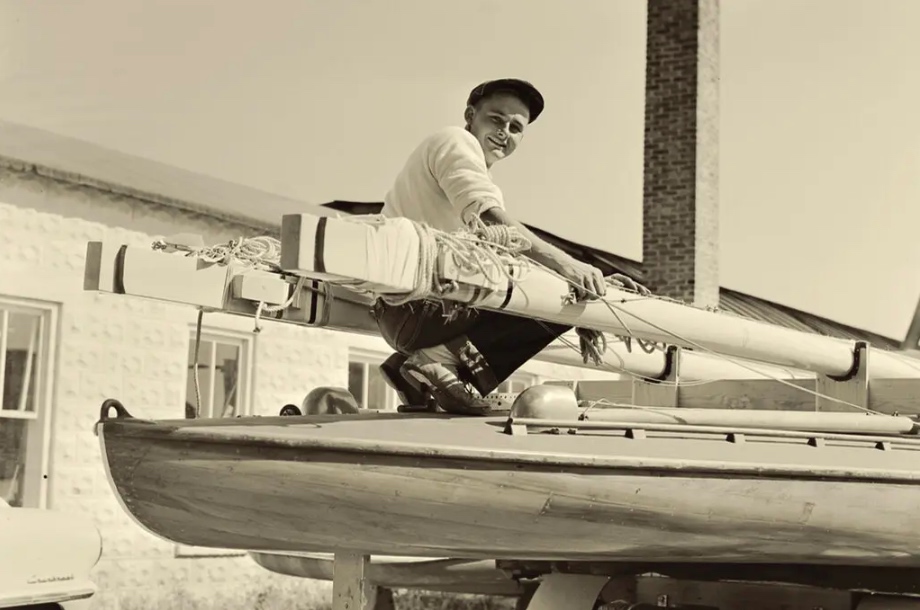
I’ll leave the more general obituary to others (several are linked to at the end of the post, along with a photo biopic from a local paper). Here, I’ll talk about him from a racing perspective.
He was a scow sailor. What does that mean? Scows are type of very flat, wide, lake boat. Scow racing is very competitive in many lake areas of the US. Melges came up, so to speak, on scows, and was one of the most successful scow racers in history. He was particularly successful in the E scow, winning the nationals 5 times. I’ve never sailed one, but reading about Melges back in the day made me curious to try.
He also raced both dinghies and keelboats. He medaled in two Olympiads: the Flying Dutchman in 1964, and the Soling in 1972. The FD was the “heavyweight” 2-man sloop rigged dinghy with main, genoa and spinnaker, and it was a beast to sail. Paul Elvström and Ted Turner were two competitive FD sailors, to give some perspective on the talent in that class. (Neither won an Olympic medal in one.)
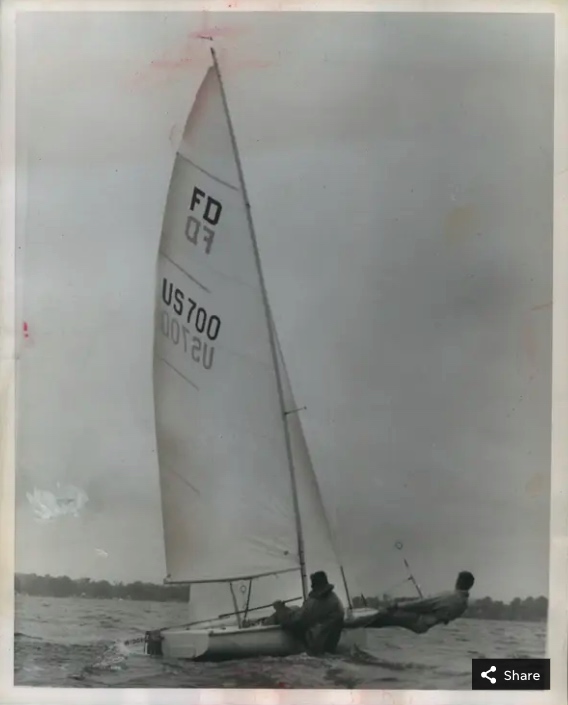
The Soling? The 3-man Olympic keelboat, also sloop rigged, with main, jib and spinnaker. I have a lot of time on Solings, although much of it was learning to sail and race when younger and, later, teaching both sailing and racing. I did sail in an East Coast Championship once as crew. Who did Melges beat in the 1972 Olympiad, amongst others? Paul Elvström, arguably the greatest racing sailor in history. (The Great Dane didn’t do very well in ’72, coming in 13th.)
But wait – there’s more! Melges also championed in the Star class, another sloop rigged Olympic keelboat (2 person; main and jib; no spinnaker). He won the World’s twice in that class. Who else is a sailing household name with fame in the Star? Dennis Connor of America’s Cup lore.
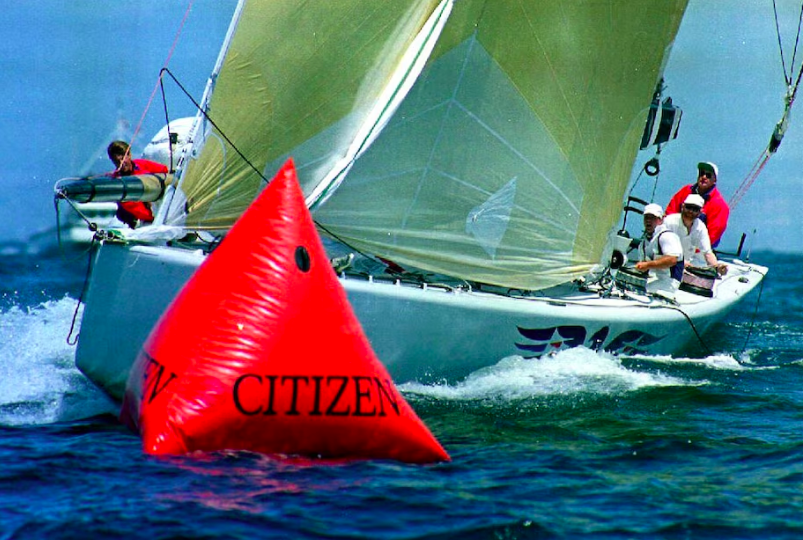
And, then, there’s the America’s Cup. Melges won that in 1992! Co-skippering, to be clear, with Bill Koch and David Dellenbaugh, but an integral part of the team. And, to win the right to defend the Cup, they had to defeat Dennis Connor, the name most synonymous with the America’s Cup. Melges was in his 60’s at the time, when the average age of an AmCup skipper was more like 38. Decades later, he said this:
“It’s nice to win the America’s Cup, but I’ll take an Olympic medal.”
Harry “Buddy” Melges, c0mparing winning Olympic Bronze and Gold to winning the America’s Cup. He did all three, and was more impressed with his Olympic successes.
Taking a few steps back in time from the America’s Cup, I realize I overlooked some of his successes. He won the Skeeter Ice Boat World Championships 7 times, and the 5.5 Metre keelboat class World’s 3 times. Almost more impressively is the fact that these two records, plus the E-Scow record, were all done from the ’50’s through the ’80s. Yup. Consistency over a long span of his life.
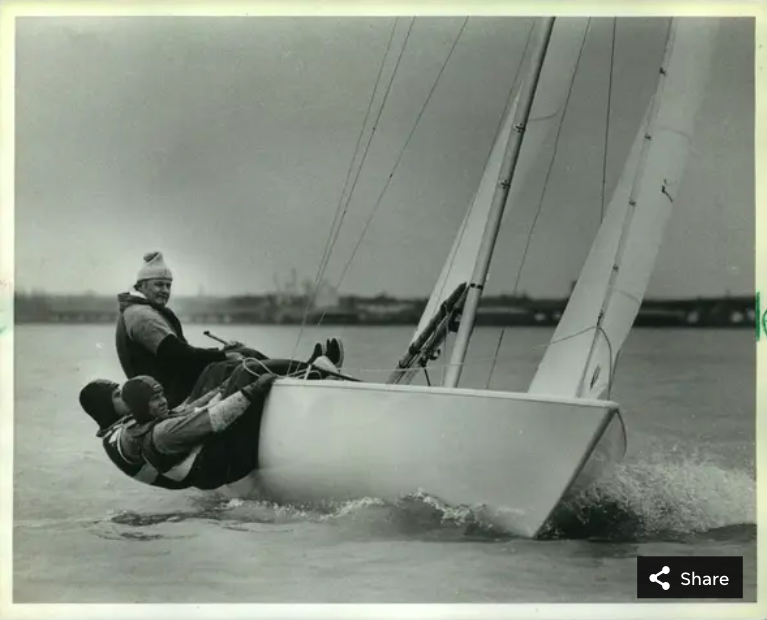
That record makes Melges one of the most well-rounded and diversely successful sailboat racers in history. At the moment, only Elvström comes to mind as a comparably, or arguably even more, successful overall sailboat racer. (Melges has the ice-boating, giving him a singlehanded class, and the America’s Cup. Elvstrom has the Finn dinghy, the world’s toughest boat to sail, with 4 Olympic golds, and he just missed the bronze in the Tornado catamaran when he was in his 50’s and his teenage daughter was crewing for him. As with Melges, Elvström was a 5.5 Metre champion. Elvström was top tier in the 505 dingy and Dragon keelboat as well. Melges built boats; Elvström built sails. Both businesses continue to thrive.)
Melges had always been into making and tweaking boats. Ultimately, he followed in his father’s footsteps with Melges Boat Works, transitioning and expanding it. After the ’92 Americas Cup, he partnered with renowned naval architects Reichel/Pugh and the Melges 24 was born, with a 32 to follow. The 24 was a true sport boat, super-light and fast AF with an asymmetrical spinnaker to make for more tactical and controlled speeding downwind. It became a very competitive class around the world, supplanting the J/24 (which was succeeded by both the J/80 and J/70).
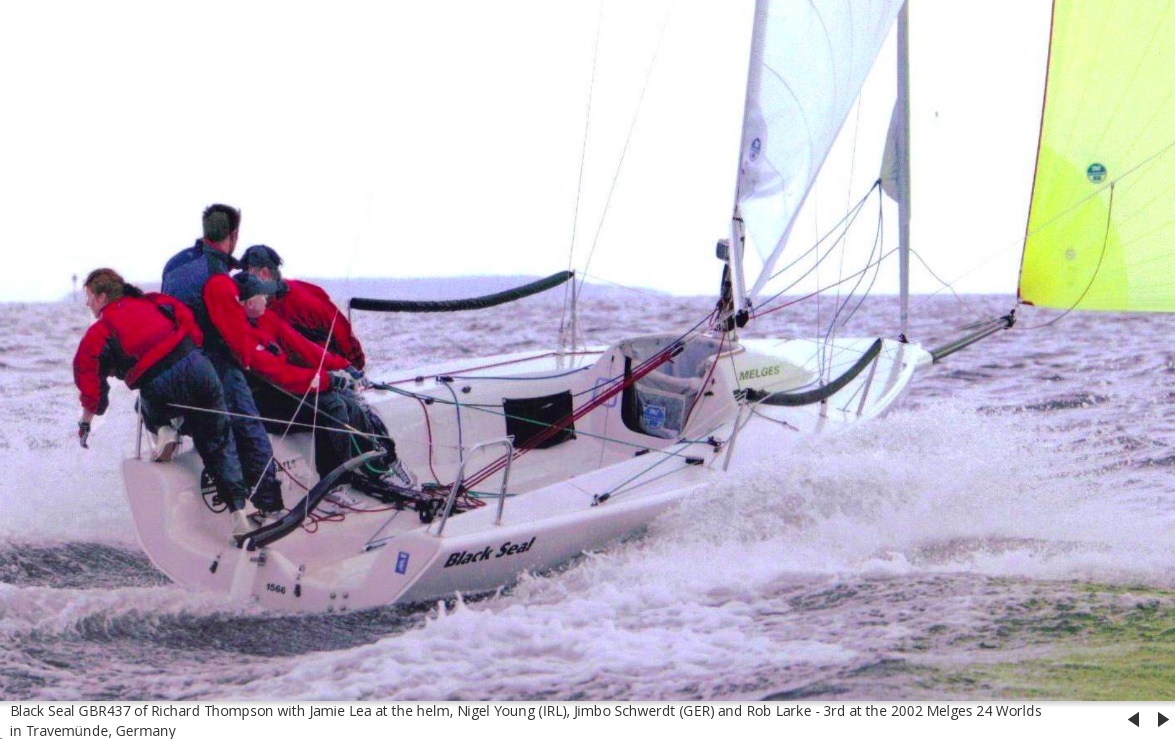
Melges was nicknamed the Wizard of Zenda, and he co-authored, with Charles Mason, a well-received book on racing called Sailing Smart: Winning Techniques, Tactics and Strategies. If memory serves from the debates from back in the day, Melges believed in something called the “lee bow effect.” Other experts didn’t. I happen to believe that most people misunderstand current, which is what’s involved here, and I always believed Dave Perry’s explanation of why there is no such effect (which he credits Peter Isler explaining patiently to him for over a year until he “got it.”).
The lee bow effect argues that, if the current is basically head-on to a boat sailing upwind, meaning it’s also sailing directly into the current, that the boat could pinch slightly (head up toward the wind) to get the current onto its leeward, or downwind, side. That, in turn would push the boat further to windward, more than offsetting the loss by going a little too close to the wind.
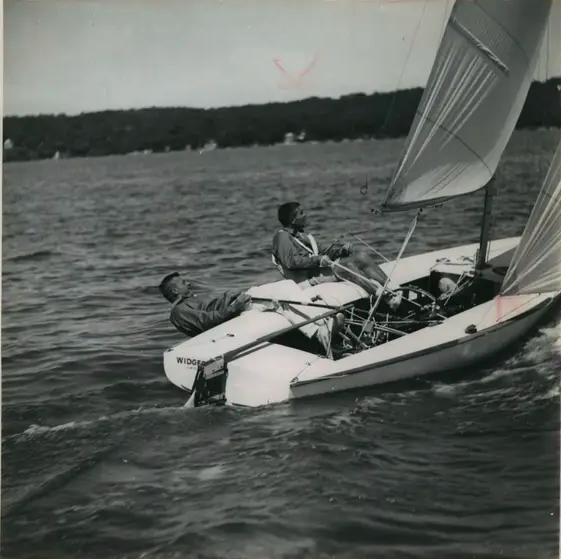
Never made sense to me. Set a fleet of boats adrift with no wind, but in current. Have them at various angles. They all drift the same way. Start moving them through the water with motors. They all travel exactly straight through the water. What’s different? There’s a ‘wind’ created by the boats moving through Earth’s atmosphere, regardless of current. The current simply changes that angle. But, rotating the boat in the water doesn’t make the boat ‘feel’ the current and react differently, so there’s no advantage to changing the angle of the boat to the path of the current. Boats neither ‘feel’ it nor are ‘deflected’ by it.
Having said all that, my racing success is limited to the local and regional level and nothing to speak of compared to that of Melges (nor to Dave Perry, Laser and Soling champion amongst other accomplishments, or Peter Isler, tactician to America’s Cup winner Gary Jobson).
Maybe Melges wrote about it in his book. I just ordered a used hard-cover copy to find out.
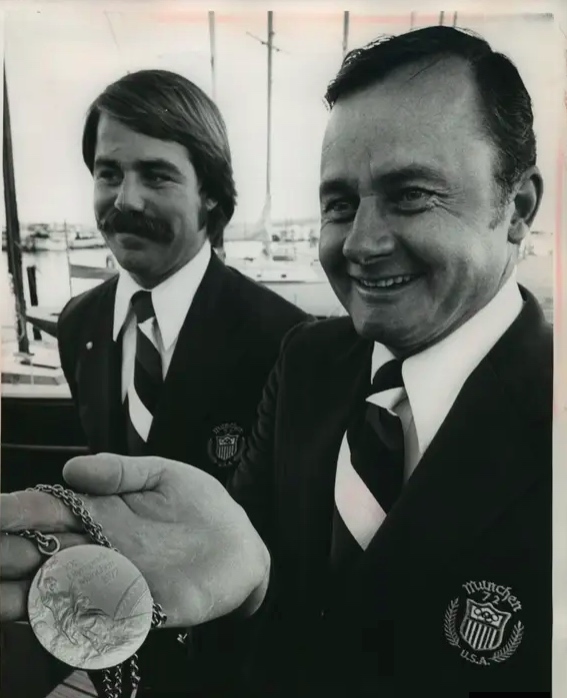
Rest in peace, Buddy. The sailing world misses you already.
Links to some bios and obits:
https://www.washingtonpost.com/obituaries/2023/05/24/buddy-melges-sailing-dies/